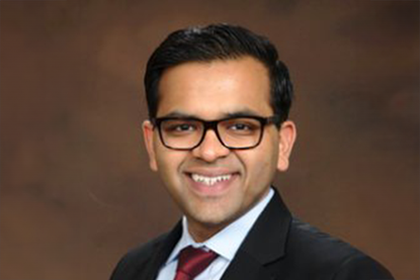(APRIL 5, 2024) Cardiologist Tanush Gupta, M.D., assistant professor of medicine, commented in a TCTMD story on a new study that echoes previous studies showing that about half of patients with severe aortic stenosis under the age of 65 are receiving TAVI, contrary to current guidelines that preferentially recommend surgery.

Cardiologist Tanush Gupta, M.D., assistant professor of medicine
(APRIL 5, 2024) Cardiologist Tanush Gupta, M.D., assistant professor of medicine, commented in a TCTMD story on a new study that echoes previous studies showing that about half of patients with severe aortic stenosis under the age of 65 are receiving TAVI, contrary to current guidelines that preferentially recommend surgery.
“What this proves to me is that more TAVR is happening in patients younger than 65 and most of these patients are low risk,” said Gupta, who was scheduled to present the findings as a poster at the American College of Cardiology 2024 Scientific Session April 6–8 in Atlanta, told TCTMD. “Practice has definitely moved beyond the evidence demonstrated by the low-risk trials and beyond what the guidelines recommend.”
He urged the cardiovascular community to “be prepared for the aortic valve reintervention that is going to come in these patients, we expect 10 years after the implant.” This will be particularly important if TAVI valves prove to be less durable than surgical predecessors. Innovative designs that improve options for redo TAVI as well as defining best practices for TAVI explant will be key, Gupta said.
Future research should focus on the detailed risk profile of these patients and how they were classified by the heart team, said Gupta. “Did the heart team call these patients low risk? And if they were high risk, for what reasons were they called high risk or intermediate risk? A deep dive into the heart team decision to offer a TAVR in these patients is going to be informative and it’s going to give us more of an insight into the nuances of these temporal trends.”
Read full story
at
TCTMD